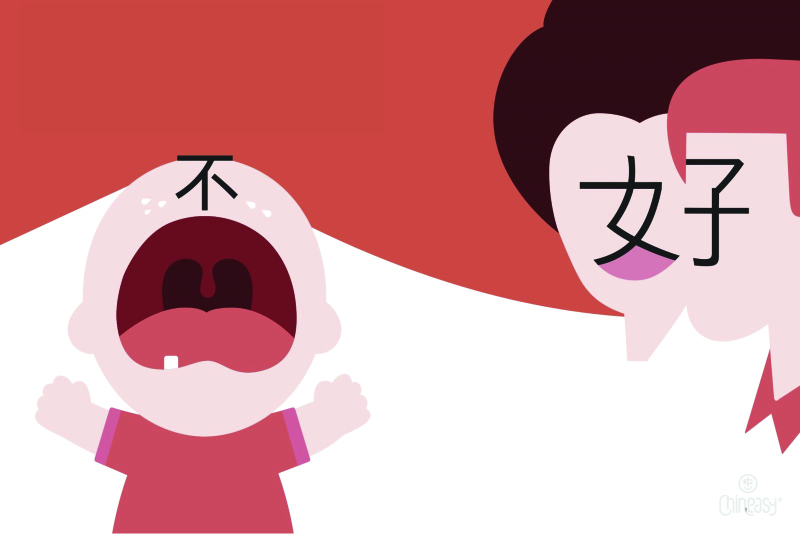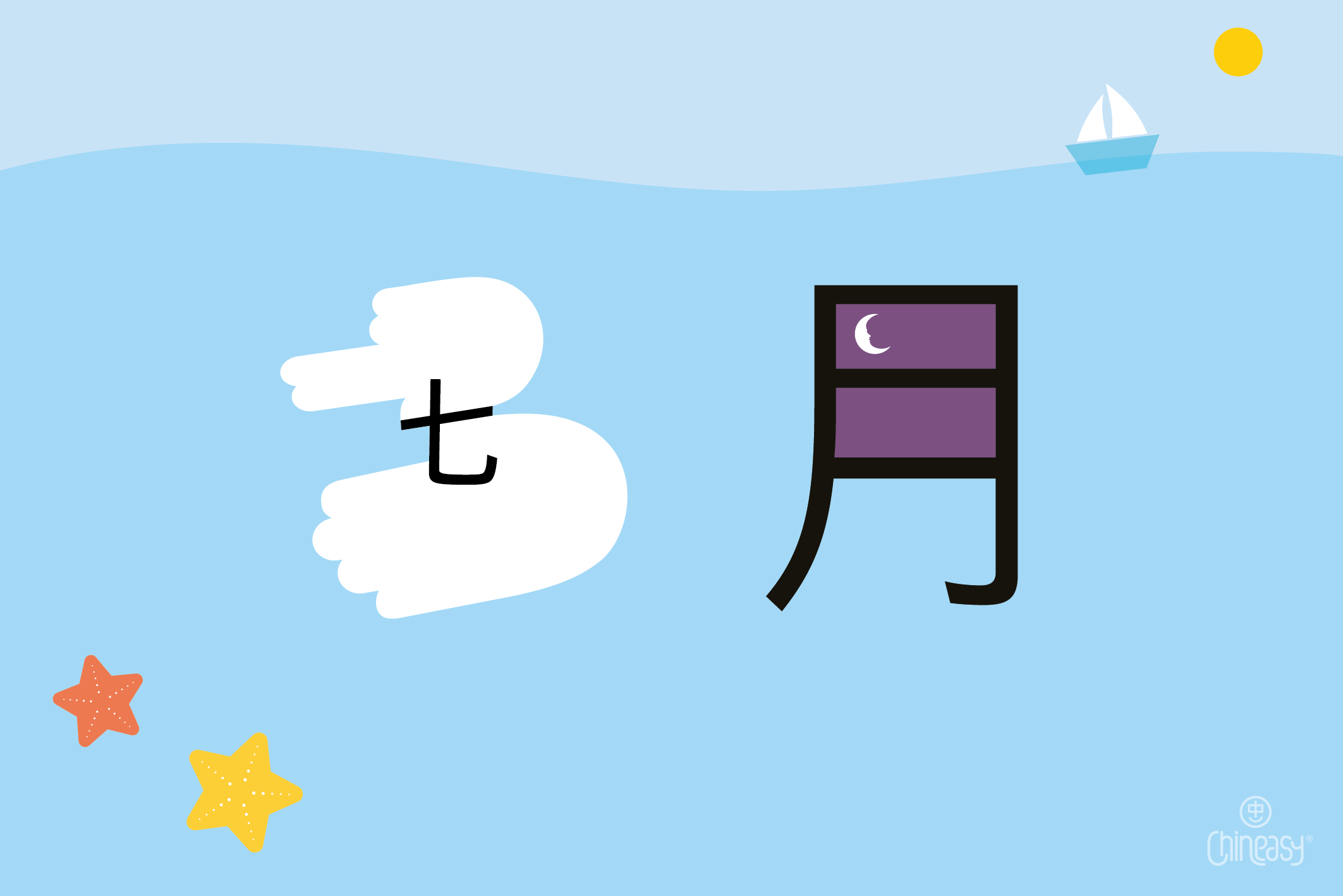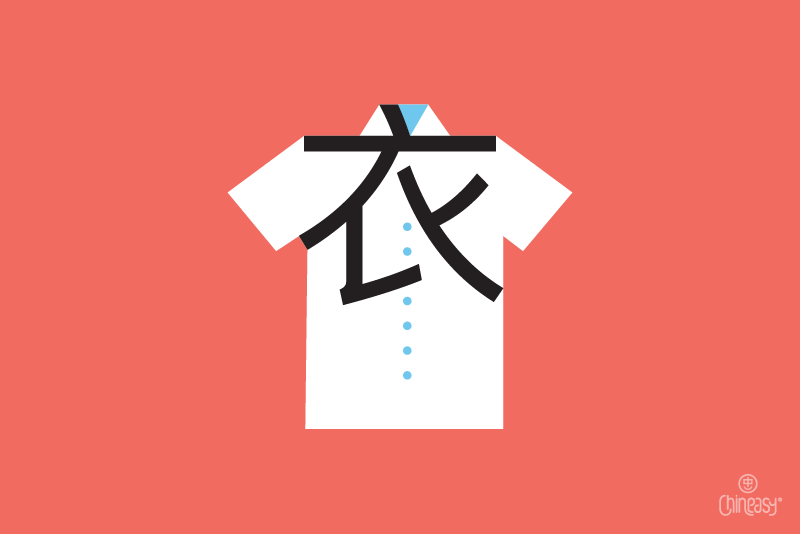“Spring adds new life and new beauty to all that is,” as the saying goes. And it’s true! Spring is like nature’s big party, where everything comes to life again.
For many of us in the Northern Hemisphere, this is when the cold goes away, the warmth seeps in, days get longer, and pretty flowers pop up everywhere.
If you’re learning Mandarin, spring is a cool chance to learn some new words. Why? Because talking about new seasons is like sharing little bits of happiness.
You get to chat about nice weather, fun picnics, and all the bright colors you see around. Plus, it’s a sweet way to make your talks more lively, just like spring itself.
In this blog post, we’ve got a list of 15 must-know Chinese words all about spring. Ready to give your language skills a big boost? Let’s start and make your Mandarin as fresh and bright as spring!
Spring 春天
Let’s start with the word for “spring” itself: 春天 (chūn tiān). 春 means “spring,” and 天 means “sky” or “heaven” or “day.” It’s the word everyone uses to talk about this lovely season.
But did you know there’s another way to talk about spring? You can also say 春季 (chūn jì; spring + season) when you’re talking about the “spring season” in particular. It’s a bit more formal, but it’s good to know.
Let’s use it in a sentence:
Want to say “Spring is coming” in Chinese? Just say:
春天來了。(in traditional Chinese)
春天来了。(in simplified Chinese)
Pinyin: chūntiān lái le
Literally: spring + to come + the grammatical particle 了.
Warm 暖和
Moving on, we have the feeling everyone loves about spring – being “warm,” or 暖和 (nuǎn huo) in Chinese.
This word has two parts: 暖 (nuǎn), which means “warm,” and 和 (huo), which usually means “and” and is pronounced as “hé.” But, in this context, it is pronounced as “huo” and doesn’t carry a specific meaning by itself.
It’s worth noting that 暖和 can only be used to describe physical temperature and can’t be used for describing people or emotions.
暖和 – the gentle warmth, not too hot and not too cold, just the right feeling that makes spring such a delightful time.
Putting it into a sentence:
To express “the weather is turning warm,“ you would say:
天氣變暖和了。
天气变暖和了。
Pinyin: tiānqì biàn nuǎnhuo le
Literally: weather + to become + warm + the grammatical particle 了.
Rain 雨

One thing that often comes to mind when we think of spring is the refreshing rain, or 雨 (yǔ) in Chinese.
Originally, this character was a pictograph of raindrops falling from a cloud.
雨 is not just a weather forecast; it’s often seen as a symbol of life and growth, especially after the long, dry winter.
Spring rain 春雨
Spring brings its unique type of rain, known as 春雨 (chūn yǔ) in Chinese, combining spring (春) and rain (雨).
Unlike the heavy storms in other seasons, 春雨 usually refers to the lighter, more gentle rains that are typical of this time of year.
These rains are a farmer’s blessing, as they provide the perfect amount of water to help new plants grow.
Rainbow 彩虹
With the spring rain (春雨) often comes another beautiful spectacle: a rainbow, or 彩虹 (cǎi hóng) in Chinese.
The term is a colorful blend of 彩 (cǎi), meaning “bright color,“ and 虹 (hóng), which stands for “rainbow.“ Together, 彩虹 paints a vivid picture in our minds of the multicolored arc that graces the sky after a shower.
But what are the colors that make up this breathtaking natural art in the sky? Here they are in Chinese:
Red, orange, yellow, green, blue, indigo, purple
紅橙黃綠藍靛紫 (in traditional Chinese)
红橙黄绿蓝靛紫 (in simplified Chinese)
Pinyin: hóng chéng huáng lǜ lán diàn zǐ
Flower 花

When we think of spring (春天), we imagine the colorful flowers, or 花 (huā), that brighten this season.
These blossoms are more than just a sign of warmer weather; they symbolize new beginnings and the renewal of nature.
The Chinese character for flower, 花, tells a story on its own. It combines 艹 (the grass radical) and 化 (to transform), showing us that a flower is like grass that’s changed into something beautiful.
Spring flowers are special because they mark the end of winter and create a colorful celebration in nature. They’re also signs of hope and a new life.
Daffodil 水仙花
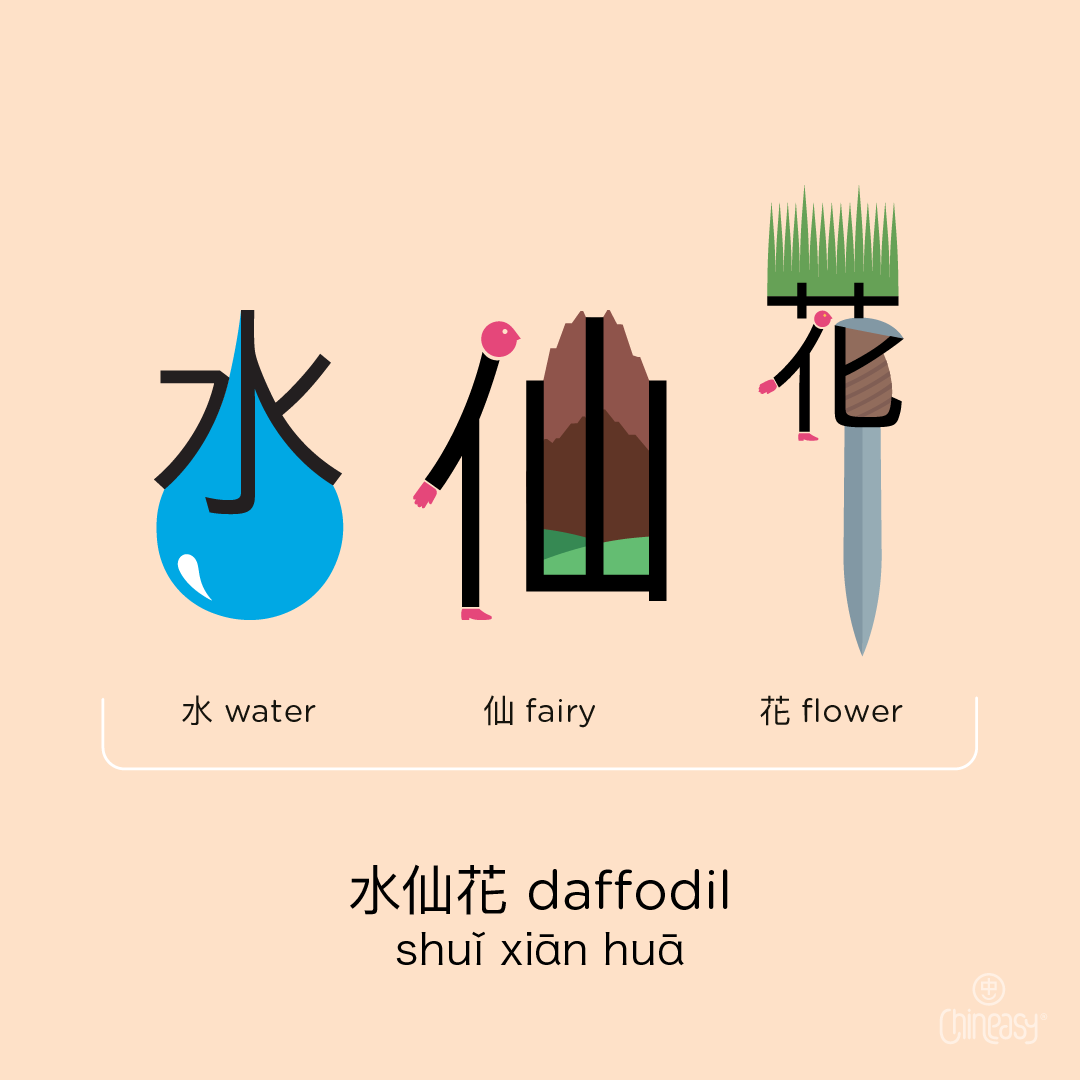
One of the first joyful signs of early spring is the appearance of daffodils, known in Chinese as 水仙花 (shuǐ xiān huā). 水仙花 literally translates to “water-fairy flower,” reflecting the flower’s delicate beauty.
These bright, cheerful flowers are beloved not just for their beauty, but also for their resilience, popping up year after year, often with little need for care.
水仙花 is the birth flower for March — the month that ushers in the spring season. This connection makes them even more synonymous with the renewal and fresh beginnings traditionally associated with springtime.
Cherry blossom 櫻花/樱花
When we speak of spring, especially in East Asia, we can’t help but mention the iconic cherry blossoms, known as 櫻花 (yīng huā) in traditional Chinese or 樱花 (yīng huā) in simplified Chinese.
The characters composing 櫻花/樱花 paint a vivid picture on their own: 櫻/樱 (yīng) stands for “cherry” and 花 (huā) is for “flower.” Together, they encapsulate the essence of these celebrated blossoms.
More than mere flowers, 櫻花/樱花 are a global emblem of both the transience and the renewal of life, with their fame deeply rooted in Japanese culture.
Tulip 鬱金香/郁金香
Spring’s tapestry wouldn’t be complete without the vibrant colors of tulips, or 鬱金香/郁金香 (yù jīn xiāng) in Chinese.
Breaking down 鬱金香/郁金香: 鬱/郁 (yù) carries the sense of something lush or abundant. 金 (jīn) means “gold” and 香 (xiāng) translates to “fragrant.”
While not gold nor typically fragrant, this name hints at the high esteem for tulips, embodying a sense of preciousness and luxury.
Tulips’ diverse palette, from passionate reds to tranquil pastels, mirrors the emotions and celebrations of spring: a season of renewal, vibrancy, and life starting anew. Their presence is a cheerful reminder that warmer days are upon us and nature is once again in full bloom.
To bloom 花開/花开
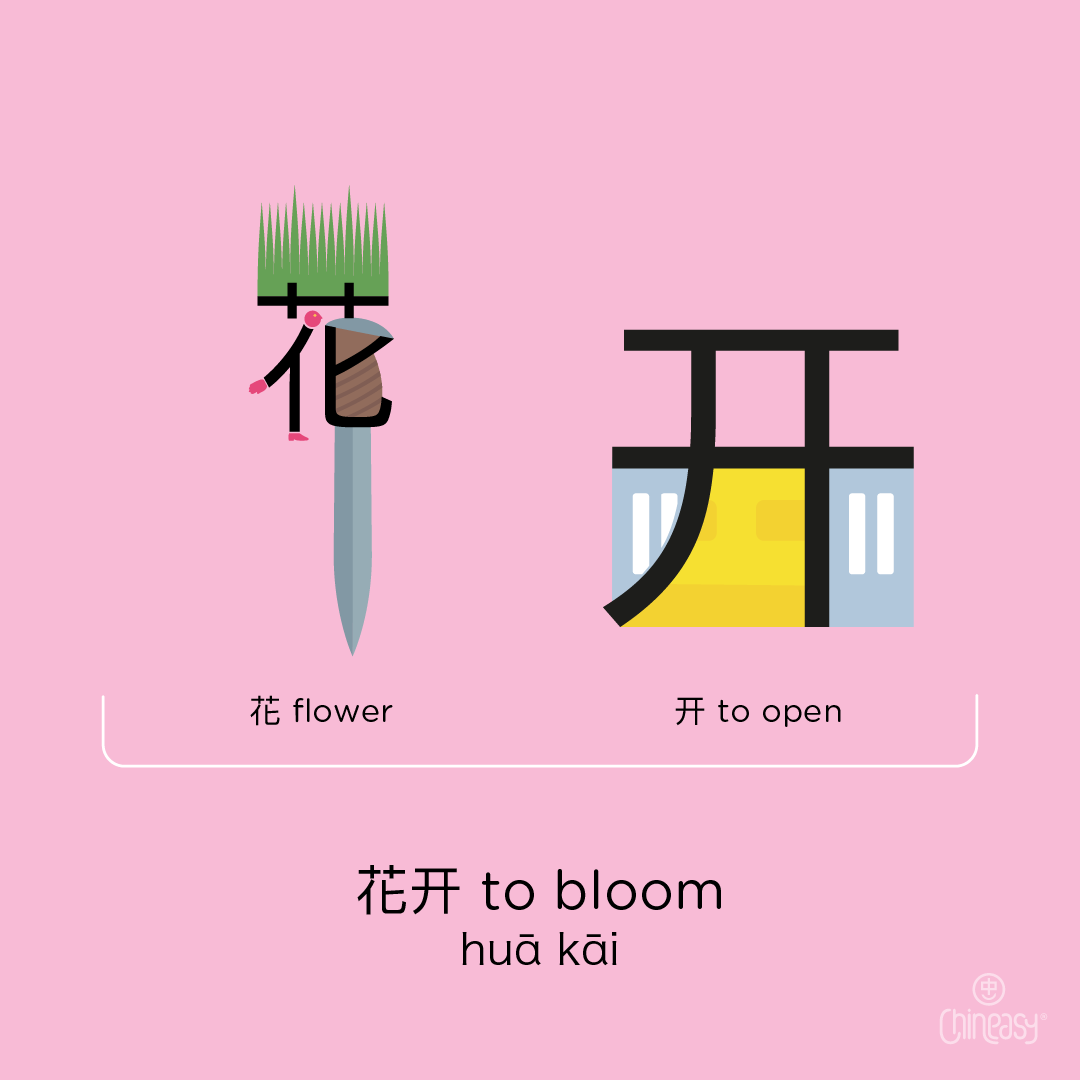
One of the most enchanting aspects of spring is witnessing the transformation of buds into full bloom, a process described in Chinese as 花開/花开 (huā kāi).
The character 花 (huā) is no stranger by now, representing “flower,” while 開/开 (kāi) means “to open.” Thus, 花開/花开 paints a vivid picture of “flowers opening,” a natural spectacle we’ve admired in daffodils (水仙花), cherry blossoms (櫻花/樱花), and tulips (鬱金香/郁金香) in previous sections.
Putting it into a sentence:
During the warmth of spring, all the flowers bloom.
春暖花開。
春暖花开。
Pinyin: chūn nuǎn huā kāi
Literally: spring + warm + flower + to open.
Bud 芽
The arrival of spring signals renewal, marked by the first sprouts pushing through the soil, known as buds, or 芽 (yá) in Chinese.
The character 芽 combines 艹 (the grass radical) on the top, signifying plants, and 牙 (yá) at the bottom. While 牙 typically means “tooth,” in this formation, it doesn’t carry that meaning. Instead, it’s phonetic, guiding the sound of the character 芽.
To germinate 發芽/发芽
In spring, another critical stage in the life cycle of plants is “to germinate,” or 發芽/发芽 (fā yá) in Chinese. It’s the moment of promise when a seed starts its journey, sprouting its first roots and shoots.
The character 發/发 (fā) means “to send out,” and 芽 (yá) we know as “bud.” Together, 發芽/发芽 depicts the initiation of life, the “sending out of buds” — a tiny miracle happening beneath the soil before we see any trace on the surface.
Let’s use it in a sentence:
The seeds have finally started to germinate.
種子終於開始發芽了。
种子终于开始发芽了。
Pinyin: zhǒngzi zhōngyú kāishǐ fāyá le
Literally: seed + finally + to start + to germinate + the grammatical particle 了.
Insect 蟲/虫
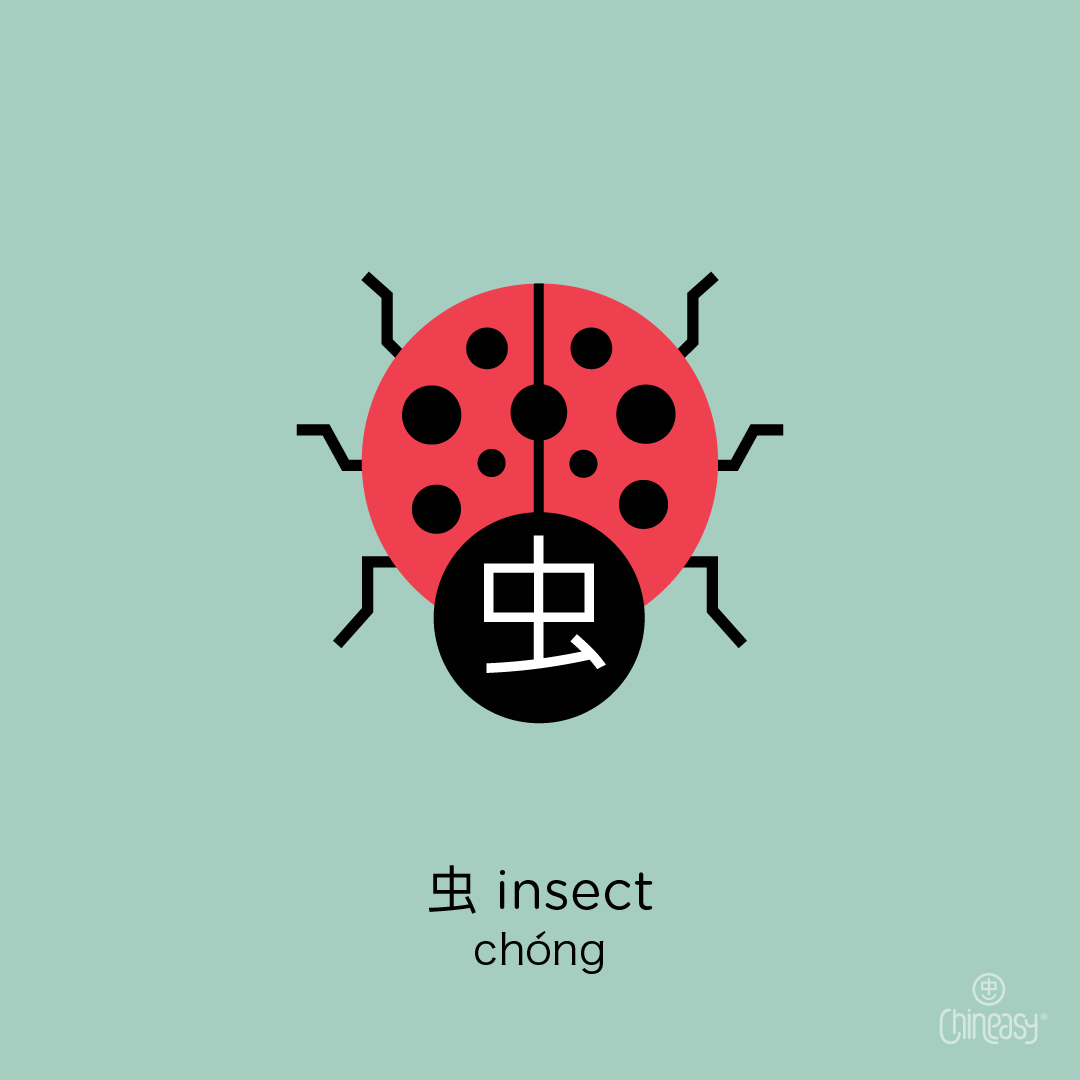
With the revival of plants and flowers, spring also welcomes various small creatures, particularly insects, or 蟲/虫 (chóng) in Chinese.
The character was originally depicted as a creature with a snake’s head and a curly insect body. Today, 蟲/虫 means “insect,” “bug,” or “worm.”
These tiny beings may seem insignificant, but they play vital roles in ecosystems, such as pollination, decomposing organic matter, and serving as food for other animals.
Caterpillar 毛毛蟲/毛毛虫
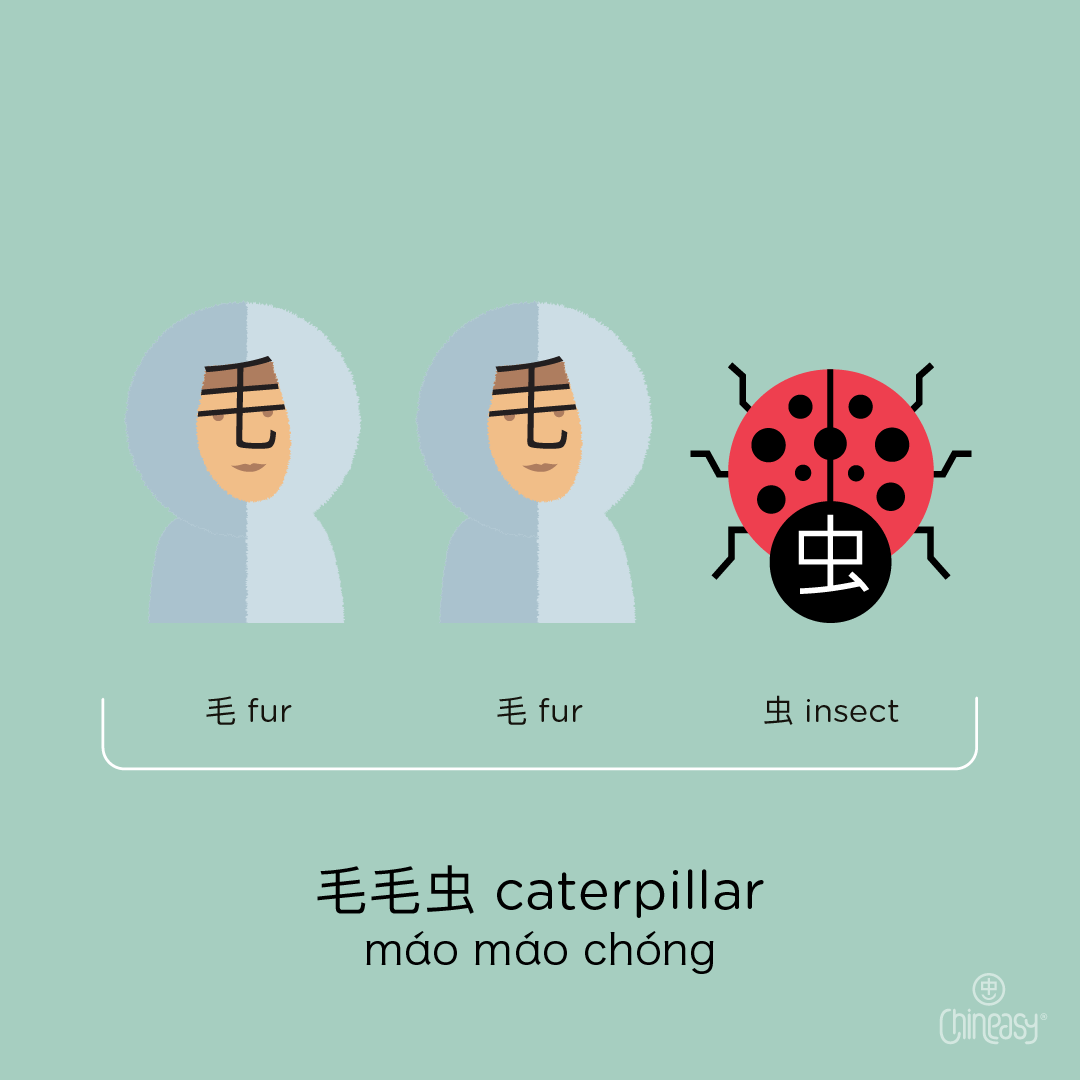
One of the insects that gain attention in spring is the caterpillar, or 毛毛蟲/毛毛虫 (máo máo chóng) in Chinese.
The term is quite descriptive, with 毛 meaning “fur” or “hair,” the tiny hair-like structures on many caterpillars, and 蟲/虫 meaning “insect.”
Caterpillars are crucial in the circle of life, particularly known for their transformative journey into butterflies.
Butterfly 蝴蝶
The final miraculous stage of a caterpillar’s life is its transformation into a butterfly, known in Chinese as 蝴蝶 (hú dié).
The character 蝴 (hú) individually refers to a specific kind of butterfly, while 蝶 (dié) is the general term for “butterfly.”
Butterflies are important in spring for many reasons. They come to life from their cocoons at the same time as flowers start blooming. They move from flower to flower, helping plants grow by spreading pollen. This is a big part of how new plants start all over again.
They also remind us that spring is a time of new beginnings and enjoying the simple moments of beauty around us.
And there we have it — your essential guide to 15 must-know Chinese words to celebrate spring! Feeling the vibrant spirit of the season yet? As the world around you blossoms, challenge yourself to identify these springtime hallmarks in Chinese during your outdoor adventures.
It’s not just a fantastic way to immerse yourself in the beauty of spring but also a fun, interactive method to enrich your Chinese vocabulary. Embrace the season, and let your language skills bloom!
